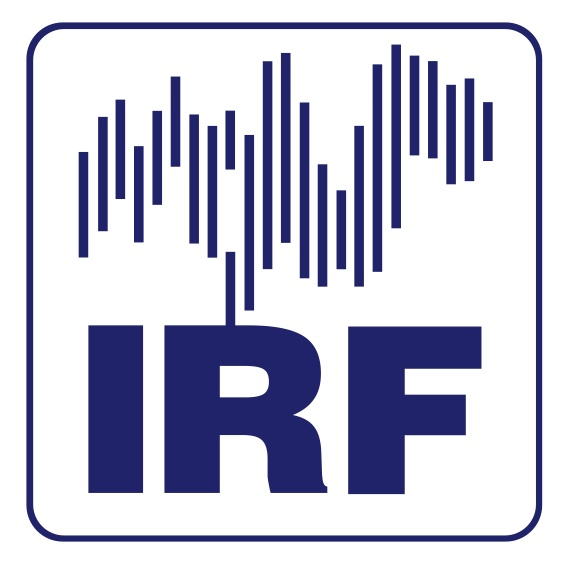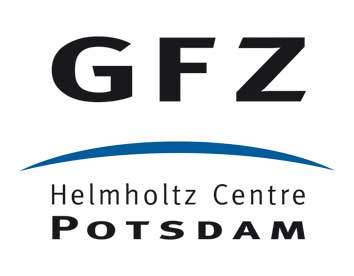
PRediction Of Geospace Radiation Environment and Solar wind parameterS
Work Package Overviews
Work Package 2: Propagation of the Solar Wind from the Sun to L1
Accurate forecast of the southward interplanetary magnetic field (IMF) is critically important, as it allows for space weather predictions of the intensity of the ensuing geomagnetic storm and would minimize false alarms. In the coming years, the Sun’s activity will decline towards solar minimum. During solar minimum, the geomagnetic and auroral activity is mostly due to southward Bz of Corotating Interaction Region (CIR) events. For space weather operational forecast it is critically important to have reliable knowledge of the IMF Bz and other solar wind parameter at L1 before these are measured in situ. This work package will deliver this data by coupling magnetograms of the solar surface to coronal physics models (AWSoM – Alfven Wave Solar atmosphere Model). These coronal physics simulations will provide the key MHD input parameters to a solar wind inner heliospheric code with the codes coupled at about 30 solar radii. The inner heliospheric codes (SWIFT - Solar Wind Flux Transfer) will use two-temperature MHD to transport the magnetic flux and fluid variables in spherical geometry out to L1 and beyond where they can be used as drivers for space weather predictions.
UW has MHD shock capturing codes that are optimised for 3D Cartesian grids, the Lare3d code, and 2D arbitrary geometry ALE grids, the Odin code. SWIFT will combine features of both of these codes by using a fixed, but spherical, grid which extends radially from ~30 solar radii out to at least L1. This will take advantage of the optimised scheme for fixed grids of Lare3d combined with the two-temperature, arbitrary grid MHD schemes used in the more general Odin code.
UM has a solar coronal model (AWSoM) that uses magnetograms to simulate the full three-dimensional magnetic field topology and plasma state of the corona. AWSoM uses a stretched spherical grid to resolve the upper chromosphere, transition region and corona accurately. AWSoM is part of the overarching Space Weather Modeling Framework (SWMF), which can couple various space weather models in one single tool. SWMF will be used to couple the AWSoM corona model to the University of Warwick SWIFT model for the inner heliosphere.
Work Package 3: Forecast of the evolution of geomagnetic indices
This WP concerns improvement and new development of models based on data driven modelling, such as CNN and NARMAX. Existing models for Dst and Kp will be analysed and verified with the aim of finding weaknesses and to suggest improvements. Solar wind and geomagnetic indices shall also be analysed in order to develop models for the identification of features, such as (but not limited to) shocks, sudden commencements, and substorms. Such categorisation will aid the model development and verification, and can also serve as alternative approach to models providing numerical input-output mapping. In addition to the development of Dst and Kp models new models will be developed to forecast AE. The models will be implemented for real-time operation at IRF and data and plots will be provided on a web server.
Work Package 4: Development of new statistical wave models
Statistical wave models for Chorus, hiss and equatorial magnetosonic mode are required to calculate the tensors of quasilinear diffusion coefficients that numerical codes such as VERB use to model the evolution of particle fluxes within the inner magnetosphere. Current models are parameterised by location and geomagnetic indices. This assumes that the wave distribution in the magnetosphere is independent of preceding evolution of the magnetosphere. There is no experimental basis to assume that the spatial wave distribution in the main phase of a particular storm is the same as during the recovery phase of the same or another storm if these periods are characterised by the same values of geomagnetic indices. In addition it is known that statistically the velocity and the density of the solar wind have greater influence on the energetic electrons fluxes at GEO than other parameters such as geomagnetic indices. Since the solar wind velocity and density are statistically related to the dynamics of energetic fluxes, their inclusion to the set of organizing parameters of statistical wave models should be investigated. The technical problem that needs to be solved is to determine the time delay (time lag) between the change in, say, the solar wind velocity upstream of the magnetosphere and the possible effect of these changes on the wave distribution at a particular location. A similar problem exists for the determination of which time lags for previous values of the geomagnetic indices should be used to organise the statistical wave model. To overcome these problems the Error Reduction Ratio (ERR) analysis, which is the part of the NARMAX methodology, will be employed to identify the set of solar wind parameters and geomagnetic indices that affect the spatial distribution of key magnetospheric emissions. A distinct set of organizing parameters will be identified for each type of waves: chorus, hiss and equatorial magnetosonic waves. The resulting newly parameterised statistical wave models will provide a more realistic view of the occurrence of plasma waves within the magnetosphere and their association with solar wind perturbations. These new models will then be used to calculate new and more realistic sets of tensors of quasilinear diffusion coefficients and hence improve the forecasting ability of physical models such as VERB and IMPTAM.
Work Package 5: Low energy electrons model improvements to develop forecasting products
The distribution of low energy electrons, the seed population (10 to few hundreds of keV), is critically important for radiation belt dynamics. This seed population is further accelerated to MeV energies by various processes. The electron flux at these energies is important for surface charging. The electron flux is largely determined by convective and inductive electric fields and varies significantly with substorm activity driven by the solar wind. Wave-particle interactions are very effective in precipitating electrons at energies of few hundred keV. Satellite measurements cannot provide continuous measurements at 10 to a few hundreds of keV at all MLT and L-shells. It is necessary to have a model that is able to specify the electron flux for all L shells for a given solar wind input and to provide the output of this model as an input for higher-energy radiation belt modeling. With the development of the Inner Magnetosphere Particle Transport and Acceleration model (IMPTAM) for low energy particles in the inner magnetosphere and the VERB full-diffusion code, the computational view on the low energy electron fluxes important for radiation belts at L=2-10 is now feasible.
Work Package 6: Forecast of the radiation belt environment
WP6 is devoted to pioneering development of a novel forecasting technique that is based on the fusion of empiric models deduced by NARMAX the most powerful and robust technique of the System Science, the most advanced physics based numerical model of radiation belts VERB full-diffusion code, and state of the art methodology of data assimilation.
Data assimilation techniques can be used to improve the results of numerical models by incorporating physical measurements in order to constrain the output, These methods enable an optimal combination of model results and sparse measurements from various sources such as those available from satellites. Data assimilation enables the filling of temporal and spatial gaps left by sparse in-situ measurements by combining measurements from different spacecraft whose instrumental characteristics are quite different. PROGRESS will use data assimilation techniques, based on Kalman filters, to improve the forecasts produced by VERB.
Current physics based models have the advantage of being able to model the processes in the whole region of the radiation belts. However, the complexity of radiation belt dynamics involves a chain of simultaneous processes operating over an enormous range of space scales from scales of wave-particle interactions to the scale of magnetopause shadowing, hinders the performance of current physics based models. The data based SNB3GEO model provides reliable forecast at GEO but because of the lack of continuous data outside GEO cannot be extended in the whole region of the radiation belts. In this WP we will significantly improve both models by extending range of energies predicted SNB3GEO and increasing its rate of prediction. WP6 will follow the ideology of meteorological forecasts by incorporating data assimilation methodologies to exploit the vast quantity of data from the fleet of the magnetospheric spacecraft. In addition the novel advanced tensors of the diffusion coefficients that will be developed in WP4 will be incorporated in the VERB code. The ultimate goal of WP6 is couple the data based NARMAX methodology with the first principle based approach utilized by VERB to the develop a hybrid model that will have advantages of the both: forecast accuracy matching that of SNB3GEO and spatial coverage of VERB.
Work Package 7: Fusion of forecasting tools
Data fusion is the methodology of combining inputs from different sources in such a way that the output of this process results in a data set that is more complete, accurate, and reliable than any of the individual input data sources. Workpackages 2 - 6 involve the development of individual models to forecast space weather events. Each model provides some forecast of how the particular parameter modelled will evolve in the near future. In WP 7 we will bring them all together, within a single system, to generate a more complete picture of the evolution of the magnetosphere in general and the radiation belts in particular. Thus, all of the results from the project will be available from within a single interface accessed from the project web site.








